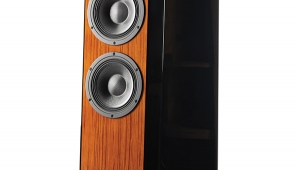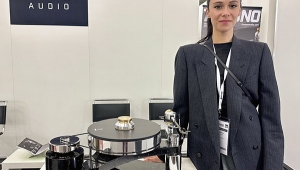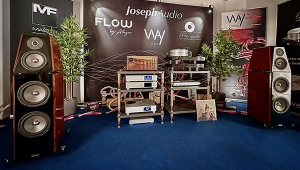| Columns Retired Columns & Blogs |
Wilson Audio Specialties WITT loudspeaker Series II Measurements
Sidebar 5: Series II Measurements
I found the WITT's sensitivity unchanged at 88dB/W/m (an average reading), aided by the good impedance characteristic defining it as an undemanding amplifier load. For example, the Cary CAD-805C single-ended triode amplifier partnered the Series IIs surprisingly well. As with the Series I, using the larger PAW feet gave a cleaner, faster bass, and improved the speaker's appearance.
Over the past two years I have found both the WATT 5/Puppy and the WITT to be comfortable in the company of stereo systems [front-ends?] priced up to $50,000, and have rarely felt the WITT to be second-best. While its balance was not as incisive as the WATT-based system's, it was often more forgiving; and the WITT's kindness to smaller, cheaper, less current-capable power amplifiers endowed it with unusual versatility. Look at the impedance curve (fig.1): the WITT is now even easier to drive, with a 6.2 ohm minimum magnitude and very moderate variation over the frequency range.

Fig.1 Wilson WITT Series II, electrical impedance (top) and phase (bottom) (2 ohms & 90°/vertical div.).
With nearfield correction to the low-frequency end of the on-axis frequency response measurement (fig.2), the output is wide and relatively flat, falling to –6dB close to the practical in-room limit of 31Hz. While the WITT's inner balance has been shifted in the Series II, there is precious little evidence of it on the new response curve; only close examination will reveal the subtle differences.—Martin Colloms

Fig.2 Wilson WITT Series II, 1/3-octave smoothed anechoic response on tweeter axis (solid), with nearfield response (dashed) (5dB/vertical div.).
- Log in or register to post comments




































